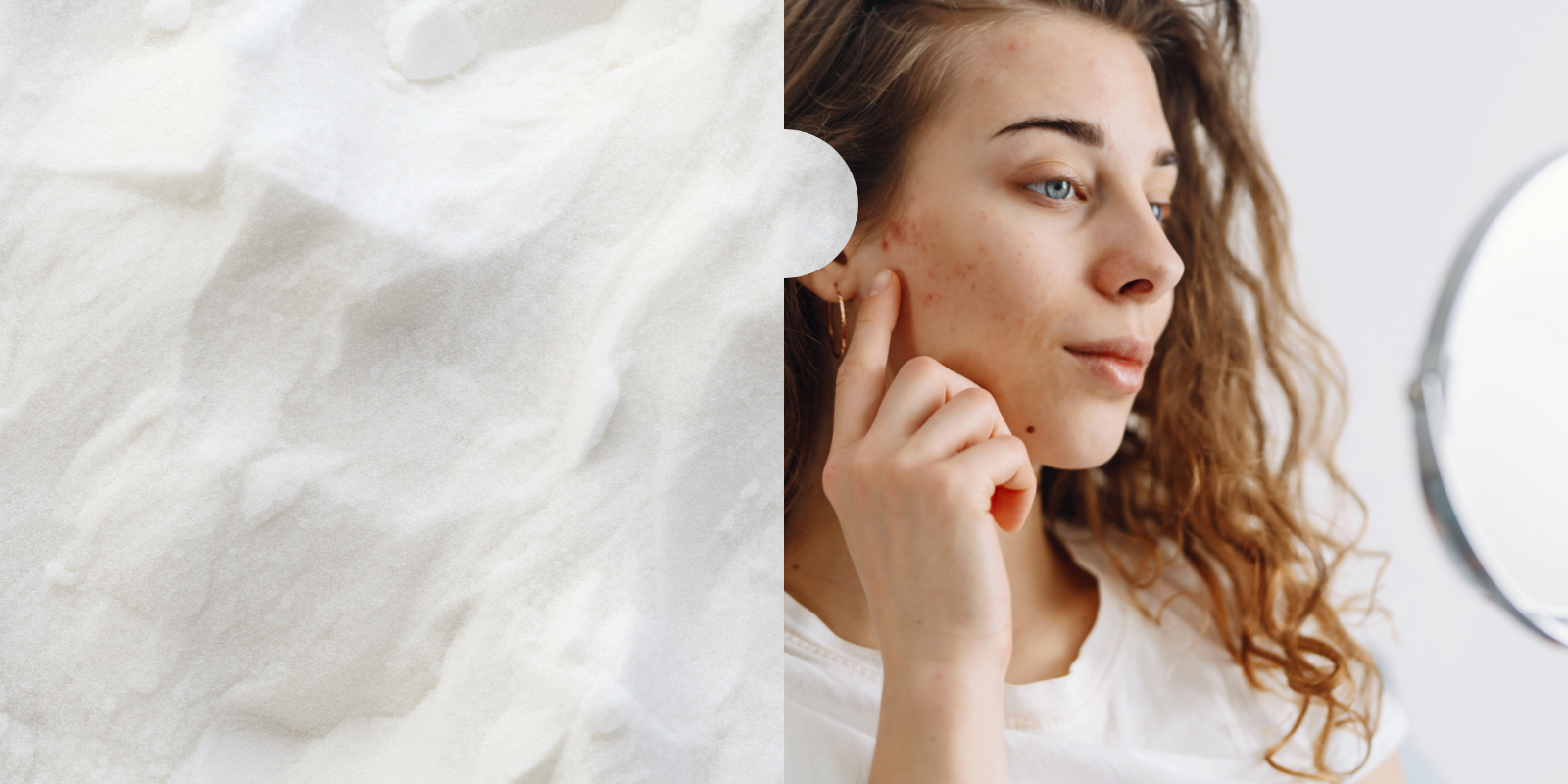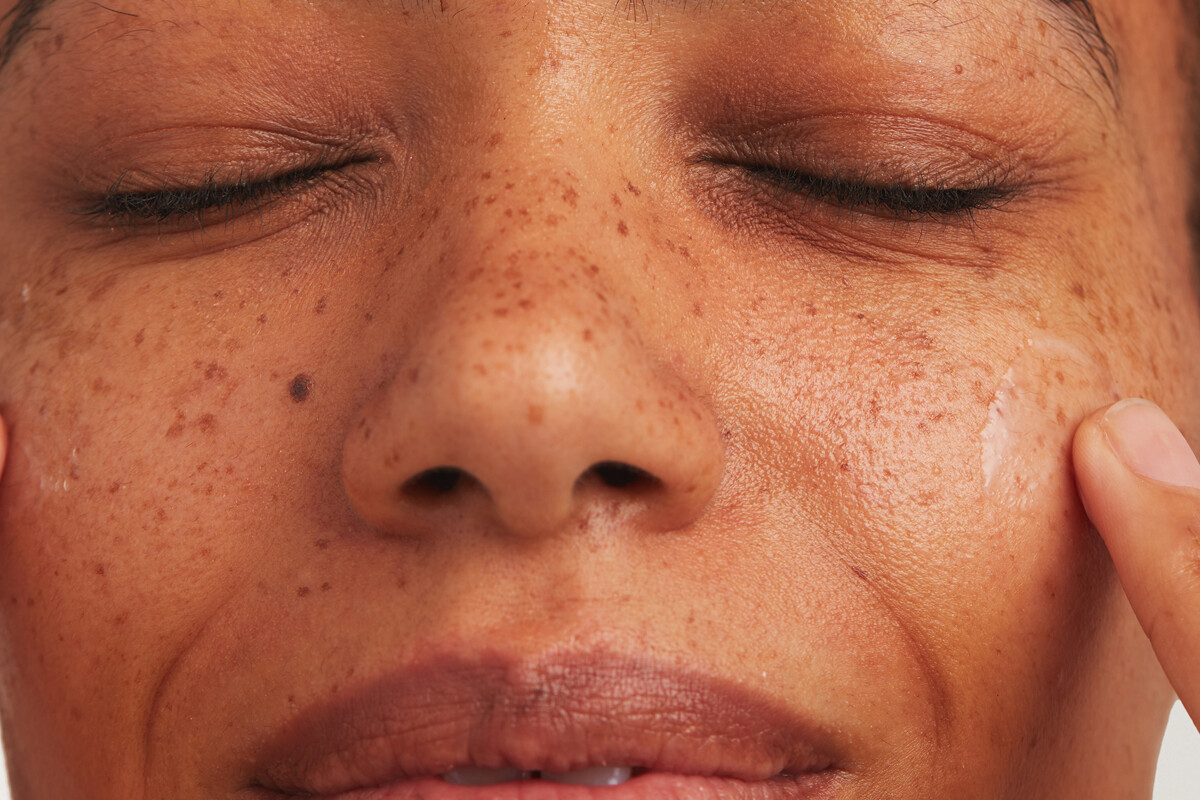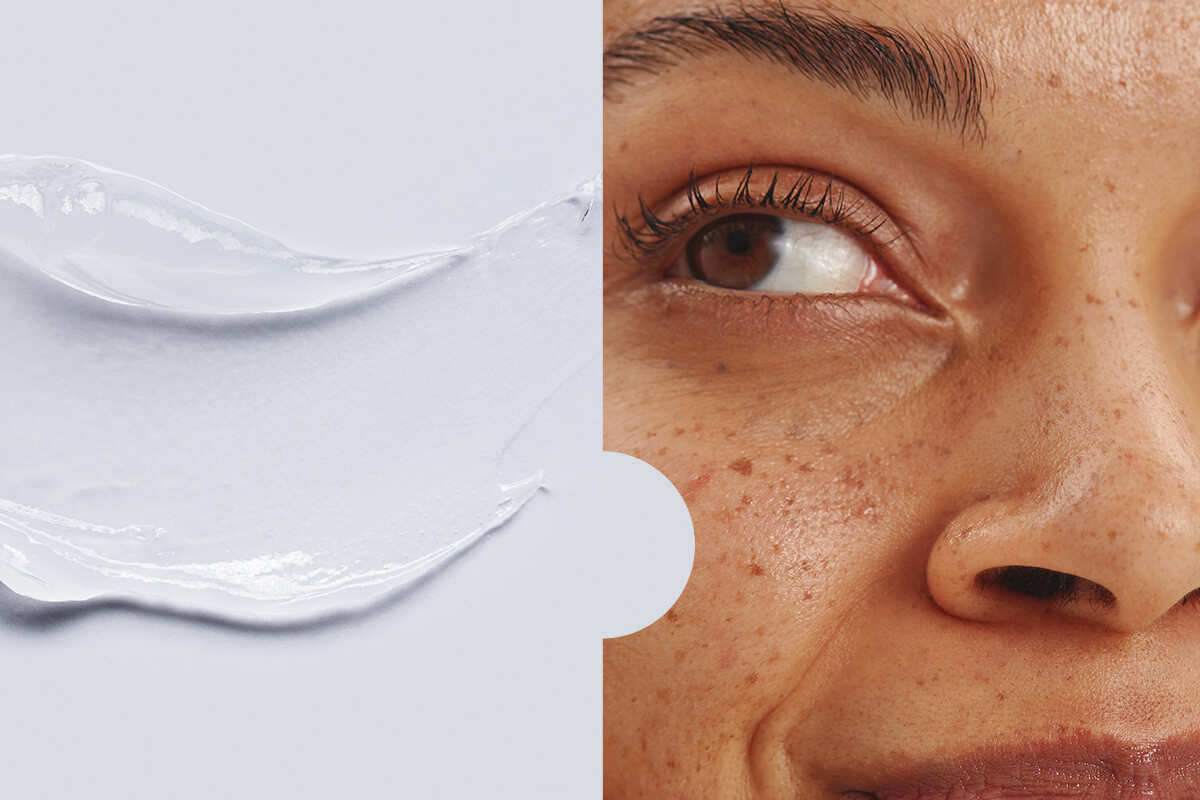Tranexamic acid (often referred to as TXA for short) has growing research and scientific studies to support it as an effective treatment for melasma and hyperpigmentation. It minimises inflammation in the skin, which is the number one trigger of excess pigment production. Tranexamic acid also prevents the uneven distribution of pigment (melanin) in the skin. (1) With it being available over the counter –– you also won’t need a prescription to add it to your regular skincare routine.
Although tranexamic acid is suitable for all skin types, including sensitive and rosacea-prone skin, some people might experience mild side effects. (2) This blog post will explain what these side effects are. We’ll tell you what to watch out for, and how to make sure your skin isn’t having an adverse reaction to this topical active ingredient.
Why Choose Tranexamic Acid To Treat Hyperpigmentation?
Before now, complex facial pigmentation conditions like melasma and post-inflammatory hyperpigmentation could only be treated with a topical prescription or expensive –– often painful –– chemical peels. Fortunately, more science-backed brands are working closely with dermatologists to design skincare with ingredients that can help fade pigmentation without needing to leave the house. These at-home treatments – like tranexamic acid – are also suitable to use over a long period of time with less chance of side effects. (3)
When combined with other ingredients like retinoids for skin renewal, and barrier-strengthening brighteners like niacinamide, patients with melasma or hyperpigmentation can treat their conditions effectively. Combining topical tranexamic acid with other actives is safe and may show results sooner than using TXA alone. Unlike hydroquinone, it doesn’t require any downtime, so you don’t need to take any breaks while using it. (4)
Tranexamic acid is generally safe even for the most sensitive skin types, and is commonly used for hyperpigmentation conditions like the treatment of melasma, sun spots and dark spots. It’s also recommended for post-inflammatory pigmentation from acne or rosacea. (5) (2)
What Are The Most Common Side Effects of Topical Tranexamic Acid?
Like almost all skincare ingredients, tranexamic acid can occasionally cause unwanted side effects, particularly if you combine it with multiple high-strength active ingredients. The good news is, side effects for tranexamic acid are usually mild. If you have a history of skin reactions, we recommend doing a patch test before adding this ingredient into your routine.
The most common potential side effects are listed below.
Skin Irritation
Redness (in light to medium skin types), rashes, itching, and dryness can sometimes occur in the areas you apply tranexamic acid. This tends to subside the longer you use it (as directed). You can also apply a ceramide-rich moisturiser like Nourishing Ceramide + Peptide Moisturiser to help restore your skin barrier and manage symptoms if this happens. (1)
Allergic Reactions
Though reported instances are rare, tranexamic acid can cause allergic reactions, such as itching, swelling, hives, or a rash. Unlike typical skin irritation, these symptoms do not subside with regular use. If you experience an allergic reaction, stop using the product immediately. Depending on the severity of your symptoms, contact your healthcare provider for further guidance.
Remember, when it comes to skincare, inflammation of any kind is a leading cause of early skin ageing. Using active ingredients that you’re allergic to, or at strengths that are too strong for your tolerance level can damage your skin barrier, and will have the opposite effect of what you’re looking for. (7)
There’s also no such thing as a “good sting,” so if your skin hurts upon applying, or looks red, raw or angry, that’s a negative reaction. Stop using the product until your skin has returned to normal, and remove it from your routine if the symptoms persist.
Is Tranexamic Acid A High Risk Medication?
No. Tranexamic acid is known to be a safer treatment for melasma and hyperpigmentation than other brightening active ingredients like hydroquinone, which is only appropriate for short-term use.
However, if you’re concerned or you already have a lot of active ingredients in your routine, it’s always a good idea to consult with a healthcare professional or qualified dermatology professional who knows and assesses your skin – like our dermatology experts at Dermatica. We can take a broader look at your full routine to assess if tranexamic acid is right for you.
Who Shouldn’t Use Tranexamic Acid Serum?
If You Have An Active Skin Condition Like Acne Or Eczema
Tranexamic acid can make skin conditions like eczema, severe acne or psoriasis worse. Although these conditions can cause dark spots once the initial lesions have healed, it’s best to use targeted ingredients that treat these conditions first. Once these have cleared, you can try tranexamic acid to fade any post-inflammatory hyperpigmentation left behind.
If You Have Highly Sensitive Or Reactive Skin
As with any active ingredient, people with highly sensitive skin may be more prone to irritation. Like we’ve said above, it’s worth doing a patch test if you fall into this category to avoid disrupting your skin barrier. (9)
If You Don’t Have Hyperpigmentation
Unless you have hyperpigmentation like melasma, uneven skin tone, UV-induced pigmentation like age spots, or dark spots left from acne breakouts, you don’t need to add tranexamic acid to your routine.
Instead, narrow down which skin concerns you want to focus on and target them with the right ingredients and an effective, science-backed routine. If you’re not sure how to do this, visit our website to find out more about active ingredients, and how we design treatment plans to help people reach their skin goals.
References
1. Ebrahimi B, Naeini FF. Topical tranexamic acid as a promising treatment for melasma. Journal of Research in Medical Sciences : The Official Journal of Isfahan University of Medical Sciences [Internet]. 2014 Aug 1;19(8):753–7. Available from: https://www.ncbi.nlm.nih.gov/pmc/articles/PMC4235096/
2. Gaćina K. The Use of Tranexamic Acid in Dermatology. Acta Clinica Croatica. 2023 Jan 1;
3. Kamal S, Doaa Salah Hegab, El M, Ashmawy AA. Efficacy and Safety of Topical Tranexamic Acid Alone or in Combination with Either Fractional Carbon Dioxide Laser or Microneedling for the Treatment of Melasma. Dermatology practical & conceptual [Internet]. 2023 Jul 31;e2023195–5. Available from: https://www.ncbi.nlm.nih.gov/pmc/articles/PMC10412040/
4. Konisky H, Balazic E, Jaller JA, Khanna U, Kobets K. Tranexamic acid in melasma: A focused review on drug administration routes. Journal of Cosmetic Dermatology. 2023 Jan 6;22(4):1197–206.
5. González-Molina V, Martí-Pineda A, González N. Topical Treatments for Melasma and Their Mechanism of Action. The Journal of Clinical and Aesthetic Dermatology [Internet]. 2022 May 1;15(5):19–28. Available from: https://www.ncbi.nlm.nih.gov/pmc/articles/PMC9122278/
6. Atefi N, Dalvand B, Ghassemi M, Mehran G, Heydarian A. Therapeutic Effects of Topical Tranexamic Acid in Comparison with Hydroquinone in Treatment of Women with Melasma. Dermatology and Therapy [Internet]. 2017 Sep 1;7(3):417–24. Available from: https://pubmed.ncbi.nlm.nih.gov/28748406/
7. Agrawal R, Hu A, Bollag WB. The Skin and Inflamm-Aging. Biology. 2023 Nov 2;12(11):1396–6.
8. Manasa Shettisara Janney, Radhakrishnan S, Rajeshwari Dabas, Lal S, Das NM, Godara SK. A Randomized Controlled Study Comparing the Efficacy of Topical 5% Tranexamic Acid Solution versus 3% Hydroquinone Cream in Melasma. PubMed. 2019 May 7;12(1):63–7.
9. Lazzarini R, Duarte I, Ferreira AL. Patch tests. Anais Brasileiros de Dermatologia [Internet]. 2013 Dec;88(6):879–88. Available from: https://www.ncbi.nlm.nih.gov/pmc/articles/PMC3900336/
Cat Hyatt
Dr Cat Hyatt is a GP, working as Clinical Content Lead for Dermatica. She has a special interest in medical content and making healthcare information accessible and understandable for all.





